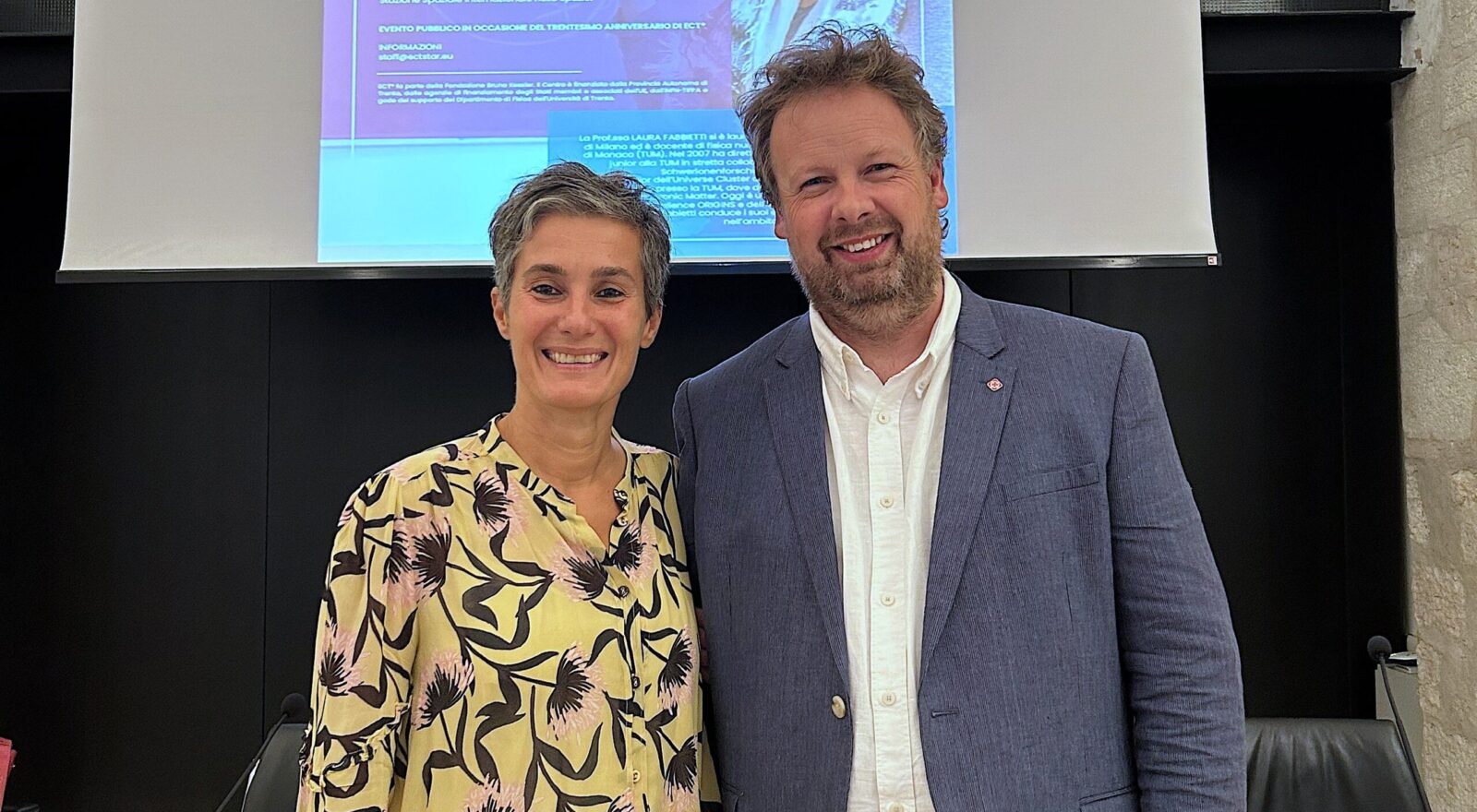30 years of ECT*
A public event with scientist Laura Fabbietti dedicated to the European Center for Theoretical Studies in Nuclear Physics was held at FBK
Founded in 1993, ECT *, the European Center for Theoretical Studies in Nuclear Physics and Related Areas, has turned 30 years old. As part of the initiatives to celebrate it, scientist Laura Fabbietti was invited to Trento on Saturday, Oct. 7, to give a talk entitled “The Long Journey of Antinuclei.”
During the public lecture in Fondazione Bruno Kessler‘s Aula Grande Hall, she outlined the characteristics of antinuclei, mirror images of normal atomic nuclei, which are also being searched for in space and may hold the key to one of the greatest mysteries of physics: dark matter.
A leading scientist in her field, Fabbietti leads experiments at CERN in Geneva as part of the ALICE joint project. A physics graduate of the State University of Milan, she is a professor of nuclear physics at the Technical University of Munich (TUM), where she directs the Dense and Strange Hadronic Matter division.
A leading research center for nuclear physics studies, ECT*, directed by Gert Aarts, promotes interaction between theoretical and experimental research and fosters the training of young researchers. It develops intensive advanced training through the organization of workshops, doctoral programs, graduate courses, and meetings in cooperation with other international research institutions on specific topics in nuclear physics and related fields.
Abstract – “The long journey of the antinuclei”
Antinuclei are mirror images of normal atomic nuclei, with the same mass but opposite charge. There are no natural sources of antinuclei on Earth, but they can be produced in the laboratory at large particle accelerators. Antinuclei are also being searched for in space because they may hold the key to one of physics’ greatest mysteries: dark matter. Dark matter is ubiquitous and accounts for five times the mass of all the matter we can observe in the form of stars in the sky, planets and all the intermediate gas in galaxies. However, it is not possible to see or touch dark matter because it does not interact with light or electrical forces. Antinuclei offer a new way to look in space for dark matter because it can interact to create antinuclei that are otherwise almost absent.

